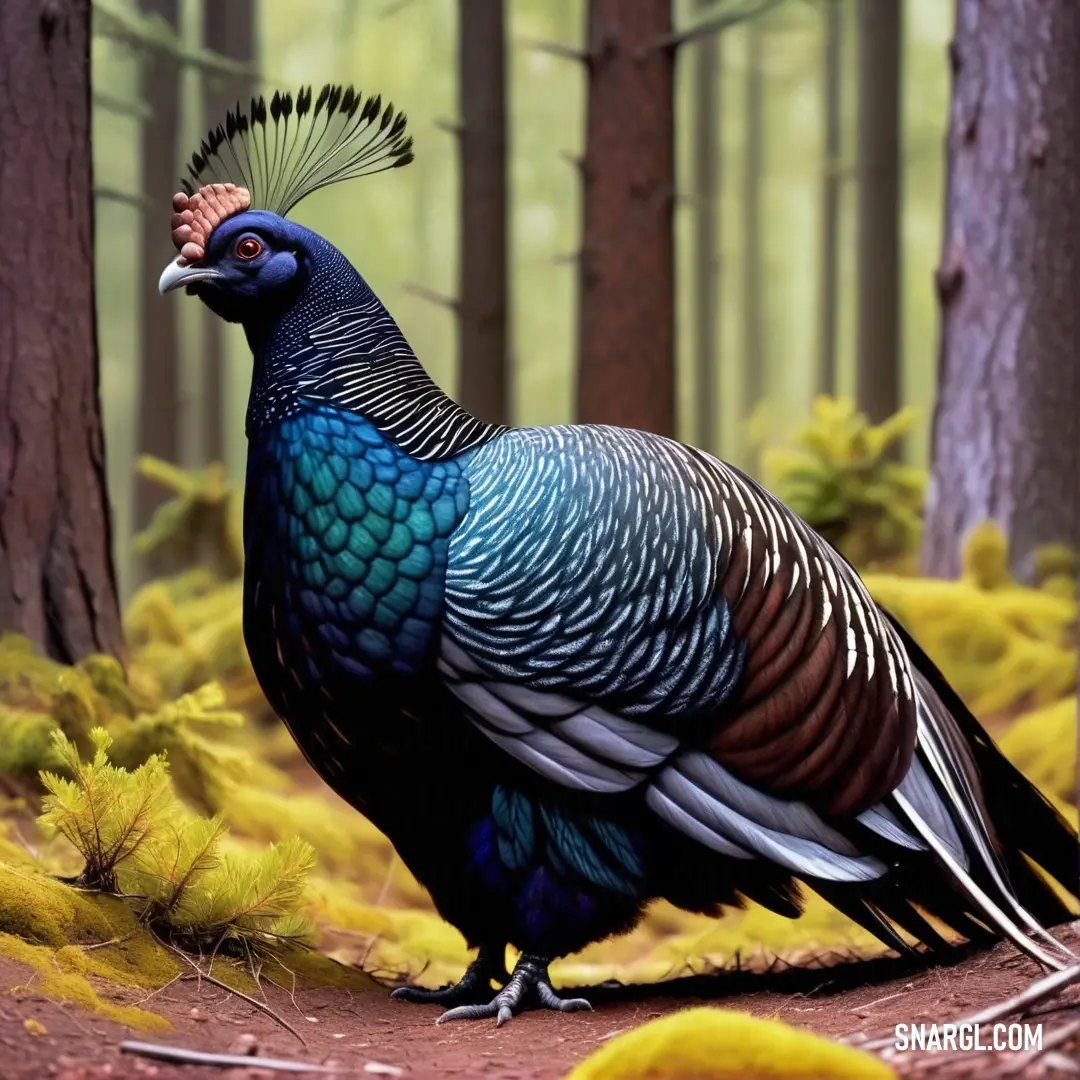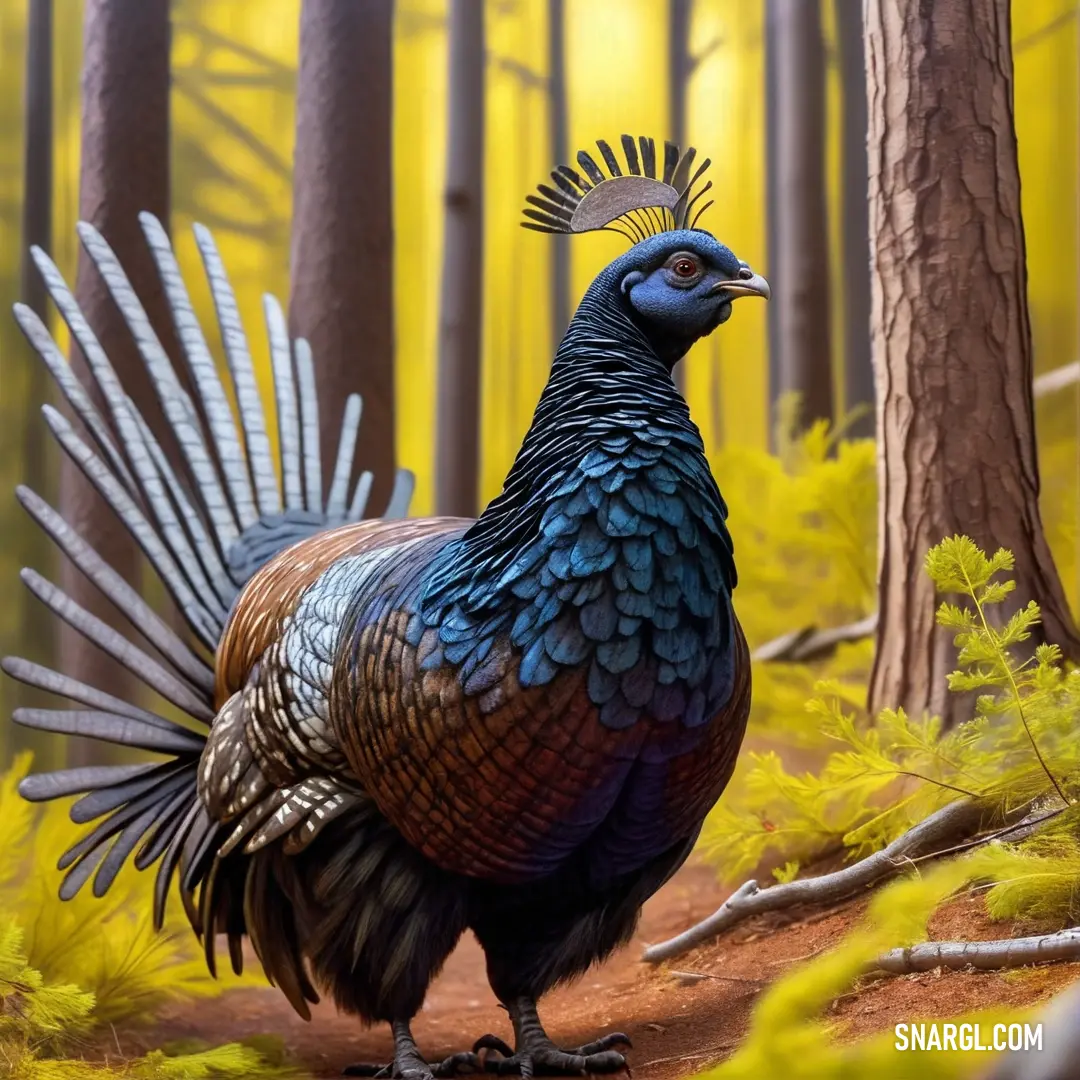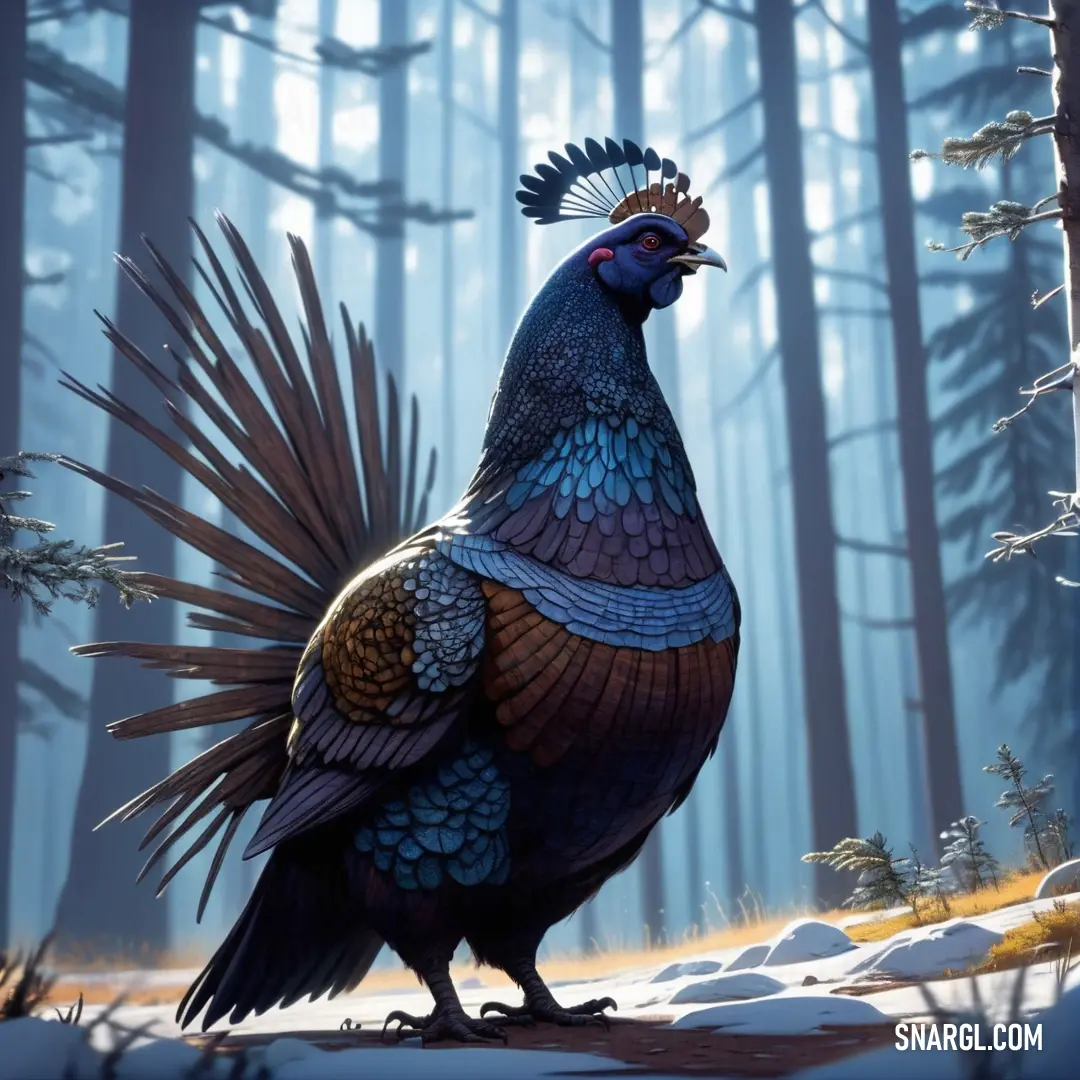
Capercaillie
What kind of animal is Capercaillie?
Example of the color palette for the image of Capercaillie

See these colors in NCS, PANTONE, RAL palettes...
What is the animal Capercaillie known for?
It is known for its distinctive appearance, its habitat in the northern forests, and its elaborate mating display.
Some facts about the capercaillie are:
The capercaillie is the largest of all extant grouse species, reaching over 100 centimetres in length and 4 kilograms in weight.
The capercaillie shows extreme sexual dimorphism, with males nearly twice the size of females.
The males are mostly black with a metallic green and blue sheen, a red comb above the eye, and a long, curved tail.The capercaillie is found across northern Europe and Asia, from Scotland to Siberia.
It lives in coniferous and mixed forests, especially those with old Scots pine trees.
The capercaillie is renowned for its unique mating display, which takes place in spring at special sites called leks.
The males gather at the leks and perform a series of vocal and visual displays, such as fanning their tails, spreading their wings, and making loud, popping sounds.
Where does the Capercaillie live?
The capercaillie is a large bird that belongs to the grouse family.
It lives in the forests of Europe and Asia, where it feeds on berries, shoots and buds of conifer trees.
The capercaillie has different subspecies that vary in size, color and distribution.
The capercaillie is one of the rarest and most vulnerable birds in the UK, where it is found only in the pinewoods of northern Scotland.
It needs old, open pine forests with lush ground cover of heather, bilberry and other plants.
These habitats are threatened by deforestation, fragmentation, overgrazing and climate change.
The capercaillie population in the UK has declined rapidly in recent years, and it is in danger of facing extinction for the second time.
The capercaillie is also known as the wood grouse, the heather cock, or the cock-of-the-woods.
It is famous for its courtship display, which takes place in spring.
The male capercaillies gather in woodland clearings, where they parade around, fan their magnificent tail feathers and make strange gulping and clicking sounds.
They compete for the attention of the females, who choose the most dominant and attractive males to mate with.
The capercaillie is a symbol of the wild and ancient forests of Europe and Asia.
It is a beautiful and fascinating bird that needs our protection and conservation.
Example of the color palette for the image of Capercaillie

See these colors in NCS, PANTONE, RAL palettes...
What does the Capercaillie look like?
The capercaillie is a large bird that belongs to the grouse family.
It has a dark brown or black plumage, with white spots on the wings and tail.
The male capercaillie has a distinctive red comb above the eye, a long curved black bill, and a metallic green and blue neck.
The female capercaillie is smaller and has a grey-brown plumage, with dark bars and spots.
These birds lives in the forests of northern Europe and Asia, where it feeds on buds, leaves, berries, and insects.
Example of the color palette for the image of Capercaillie

See these colors in NCS, PANTONE, RAL palettes...





 Dark lava
Dark lava Dark cyan
Dark cyan Smoky black
Smoky black Pale blue
Pale blue Vegas gold
Vegas gold



 Black
Black Medium carmine
Medium carmine Lemon Cream
Lemon Cream Stormcloud
Stormcloud Medium turquoise
Medium turquoise





 Dark jungle green
Dark jungle green Charcoal
Charcoal Shadow
Shadow Cadet
Cadet Umber
Umber
